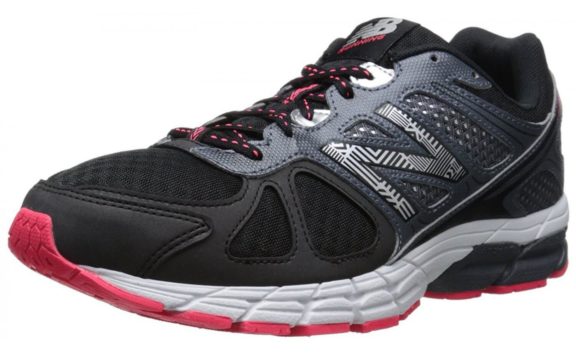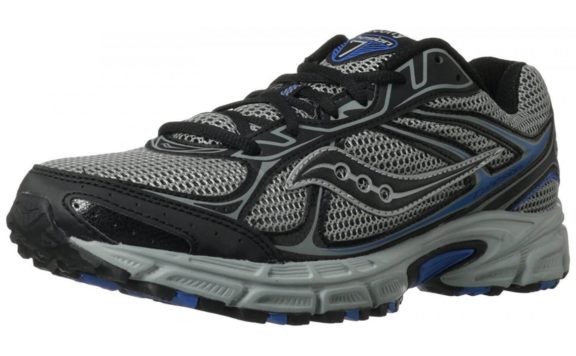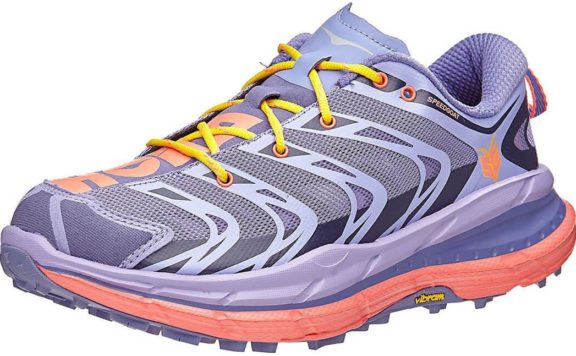Details
Brand
Adidas
Heel To Toe Drop
N/A
Breathability
9/10
Latest Version
Yes
Terrain
Road
Type
Neutral
Key Features
• Thinner outsole made from rubber contains several hexagonal trenches• Highly compressed EVA foam midsole with a significant heel drop• Primeknit fabric upper offers a snug and breathable fit• TPU midfoot cage offsets lack of upper stability• Major emphasis on fashion drives up value
Upper
Adidas has begun implementing a new form of material for their upper portion that sacrifices durability for a more lightweight and breathable design. This knit fabric construction is known as Primeknit and is very similar in design to Nike’s Flyknit line of running shoes. Thanks to this specific design decision, the NMD XR1 is able to contribute stability from its upper by providing a conforming fit to the wearer’s upper foot. However, in order to get the most out of this benefit, it may be required to order a half size lower than your true size, since these shoes have a tendency to run a bit larger than average.
Midsole
Bits of the midsole can be seen on the underside of these Adidas shoes due to the numerous holes in its design. While this may cause some customers to be concerned as to whether it will last as long as other running shoes with more protection on the underfoot, these concerns are mitigated by Adidas’ design. This aspect of their NMD XR1 shoe is more traditional than others, being made from the commonplace compressed EVA foam. The reason for this material’s popularity is the fact that it can provide a fantastic amount of support, durability, and responsiveness at a low cost and lightweight. For a running shoe like this, the use of EVA is a no-brainer.
Outsole
A bouncy rubber material is used for the outsole of the Adidas NMD XR1. This is different from the common practice of using outsole material that is harder and more capable of withstanding abrasion. While this does mean that the general durability of these shoes takes a hit, it comes with the benefit of much greater responsiveness and a lighter stride. Depending on the specific color scheme chosen, this outsole can come in a variety of different colors. It stands out from the rest of the shoe, and from most other running shoes on the market for that matter, by featuring a style that comprises hexagonal dimples.
Breathability
These running shoes have less of a need for high breathability from the get-go, thanks to their lighter than average weight, but they still feature a fantastic degree of airflow up top. This is the primary benefit of its Primeknit upper, which uses a knit pattern for its fabric that allows for airflow throughout the interior, maintaining a comfortable internal temperature. As a result of these implemented design features, these Adidas running shoes can be comfortably worn for extended periods of time in even the warmest running environments.
Comfort
Some aspects of these shoes are more comfortable than others. One section that is perhaps the most comfortable is the midsole with its compressed EVA foam cushioning. This soft yet dense foot cradle ensures excellent protection from harsh terrain while also allowing for enough flexibility to avoid feeling uncomfortably rigid. Another area of this Adidas running shoe that provides comfort is its upper, the use of Primeknit fabric for the top portion ensures a snug fit while also providing fantastic ventilation for the NMD XR1’s interior. Unfortunately, the use of less resilient outsole material and some awkward sizing discrepancies throw off the final product’s cumulative comfort level.
Style
This is the single most enticing aspect of these Adidas running shoes. Although this company is known for playing second fiddle to Nike, the NMD XR1 take the gold in terms of aesthetic appeal. This seamless blend of futuristic design elements with traditional sneaker trappings simply cannot be found anywhere else. With a variety of different color schemes available to choose from, some with extremely limited releases, it should come as no surprise that these runners are so popular among collectors, resellers, and sneakerheads all around the world.
Durability
This is perhaps the least enticing aspect of the Adidas NMD XR1. In the pursuit of a lightweight and extremely fashionable running shoe, Adidas cut several corners in the durability department. The implementation of Primeknit material for the upper in lieu of traditional foam and synthetic-based designs is forgivable since many other brands of running shoes have taken a similar approach. However, the use of less durable outsole material, and in a flimsier design for that matter, is much less forgivable for serious runners. Because of this design aspect, individuals accusing these shoes of providing form over function have a point.
Protection
To be fair, the entirety of the wearer’s foot is covered by this shoe, offering the bare minimum when it comes to protection. If this shoe is ordered in a winter style with the higher collar, even the wearer’s ankle is provided with a line of defense from the elements. Additionally, the midsole having been made from high-quality compressed EVA foam means that the wearer’s underfoot will have some protection from repetitive stress during their run. However, the use of extremely thin material for both the upper and outsole of these shoes means that the NMD XR1 is not a viable pick for runners interested in a protective ride.
Responsiveness
While there are some aspects of these Adidas running shoes that can detract from the running experience, one aspect of the NMD XR1 that doesn’t is its ability to respond to the runner’s input. Thanks to a very lightweight design and a comfortably snug knit fabric upper, little is present in this shoe’s construction that would impede its responsiveness. In particular, the EVA midsole of this shoe is the one part that contributes the most to this design aspect. Because of this particular strong point, it seems that these running shoes work best in shorter running sessions with a focus on speed work, such as high-intensity interval training sessions.
Support
As one may expect from a shoe that uses compressed EVA foam in the construction of its midsole, there is a decent amount of support present in the Adidas NMD XR1’s underfoot. This is fairly common among running shoes and thus should come as no surprise. Something that is a bit more surprising about this shoe’s support is the implementation of a midfoot cage. Made of lightweight TPU material, this helps to provide additional support to the medial and lateral sides of the wearer’s upper foot that may have otherwise been lost due to the Primeknit construction. A small window has been added to the lateral sides of this cage in order to promote breathability at the same time.
Terrain
Unfortunately, this is not a shoe that offers a great deal of versatility when it comes to running environments and terrain compatibility. A lighter, thinner, and less resilient outsole is the primary reason for this limited functionality, although the light and thin upper doesn’t do the NMD XR1 any favors either. However, this shoe’s outsole is the most damning feature and is what limits these shoes to casual environments such as a sidewalk or field. Thanks to a highly responsive and supportive midsole, these shoes can still perform to a decent degree on a track, however, any rougher paths or trails are completely out of the question.
Price
When this running shoe was first announced, the hype for its design and style was uncontainable. As a result, certain styles sold out very quickly after launch and were resold through third parties for drastically inflated prices. Fortunately, the market has stabilized since that point and these Adidas runners have a much more reasonable price tag. Although some special colors and styles will still have absurdly high price tags attached to them, the majority of color offerings and sizes will be within the same range of cost. The closest comparison to the NMD XR1’s price would be a decent trail running shoe or another high-profile fashion sneaker.
Drop
There doesn’t seem to be any official documentation regarding the heel drop of these Adidas shoes. It’s a bit tough to make a visual approximation as well since the thinner design of the NMD XR1 causes it to curve slightly. However, a close guess would put it on the higher end of the spectrum, in line with the common design practice found in running shoes with similar design features. The reason for additional heel cushioning and diminished forefoot cushioning is to ensure protection for the wearer’s heel from repetitive ground striking while also ensuring a solid grip on their running surfaces through their toes.
Stability
As previously mentioned, these running shoes from Adidas are flexible to such an extreme degree that their overall stability takes a major hit. Fortunately, there are still some aspects of the NMD XR1’s design that can add some much-needed stability. One method is to order these shoes in a half size smaller so as to ensure a more snug fit. Since a few reviewers have stated these shoes felt a bit too roomy in their true size, this is a great way to increased the level of control while they are worn. Aside from this, a solid midfoot cage and compressed EVA midsole save these shoes from feeling completely out of control.
Flexibility
Thanks to the numerous design decisions made by Adidas in the pursuit of delivering a lightweight running shoe, a high amount of flexibility is present in the NMD XR1’s design. This is most noticeable due to the highly pliable upper portion which is made from a knit fabric referred to as Primeknit. Unfortunately, the high flexibility of this shoe’s design is not balanced out with a similar degree of stability, due in large part to the flimsier outsole.
Traction
Traction isn’t one of this running shoe’s strong points. There has been some effort placed in the design of the NMD XR1’s outsole that could provide a modicum of grip on some surfaces, but the manner in which it was implemented is counterintuitive. Rather than implementing the common design technique of adding additional material to the outsole in the form of treading or cleat-like lugs, Adidas instead selectively removed outsole material to create hexagonal trenches. While this can provide some extra grip on a runner’s underfoot, the downside is a drastically reduced durability.
Bottom Line
Although there are some nagging issues with these running shoes, the vast majority of individuals interested in purchasing them don’t care about how well they perform on the track. The NMD XR1 is a status symbol first, a fashion statement second, and a running shoe third.







